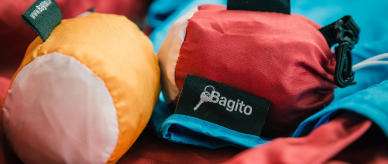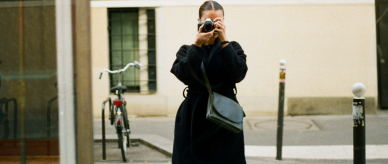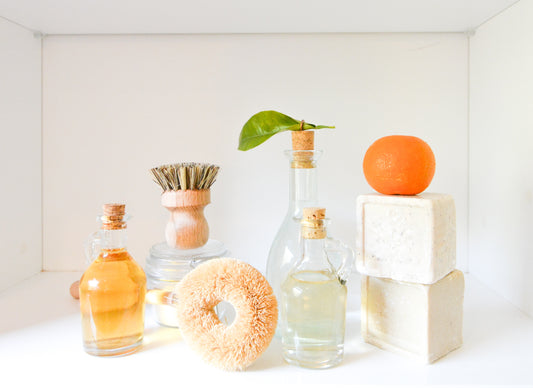It's alarming to consider that every year, the world generates approximately 141 million tonnes of plastic packaging, a significant portion of our planet's pervasive pollution. The COVID-19 pandemic further exacerbated this issue, with paper and board packaging waste surpassing expectations due to a surge in online shopping. Now, more than ever, it's clear that we must re-evaluate our relationship with packaging materials. This crucial task has been taken up by innovative companies like Verte Mode. In this article, we delve into Verte Mode's mission, its eco-conscious strategies, and its vision for a sustainable future.
Verte Mode: Advocating for a Plastic-free Future
Verte Mode sprang to life with a single, compelling mission: to eradicate plastic waste. This ambitious objective is reflected in every facet of the company's operations. Verte Mode offers its customers an array of durable, attractive, and genuinely sustainable packaging and shipping solutions.
Innovation is ingrained in Verte Mode's DNA, making sustainability more than just a buzzword; it's the foundation on which the company was built. It's no wonder, then, that the company's leaders work relentlessly with their brand partners to deliver 100% biobased materials. These eco-friendly solutions don't just look and feel good - they actively contribute to the well-being of our planet.
Even simple steps like consolidating the number of items in a delivery could curtail the carbon footprint of each item by up to 30 per cent. -Verte Mode's CEO, Aalia Mauro
Such insights reveal that meaningful change often starts with small, manageable shifts in our habits and practices.
Refilling and Recycling: Embracing the Closed-loop System
The notion of refilling containers is gaining traction with consumers, and an increasing number of stores are embracing this new shopping paradigm. Implementing best practices and solutions tailored to specific local challenges can help communities educate consumers about the importance of this change and how they can contribute to a closed-loop system.

This circular approach to consumerism eliminates single-use packaging, fostering a culture of sustainability and responsibility. It's an important step towards achieving Verte Mode's vision: rendering plastic obsolete.
Beauty Industry: The Plastic Predicament and the Path Forward
There was a time, not so long ago, when beauty products were plastic-free. Soaps were sold in bars, perfumes were housed in glass bottles, and creams were stored in jars or tins. However, the plastic revolution of the 1990s unveiled a plethora of new opportunities for the beauty industry. Plastic was not only cheaper, but it was also much lighter and more durable than glass or tin, enabling products to be transported and sold across vast distances.
Today, cosmetics dominate entire aisles in supermarkets. The packaging industry is booming, boasting a global market value of nearly €23 billion. Given the sheer scale of this issue, reducing or eliminating packaging presents a considerable challenge. Thankfully, there is a rising demand for plastic-free alternatives from the public and increased government actions such as bans on single-use plastics.
The concept of sustainable packaging incorporates a host of factors, encouraging us to reconsider how beauty products are manufactured, distributed, stored, and consumed. From do-it-yourself shampoo to reusable mascara tubes and cork packaging, the beauty industry has seen a slew of innovative, eco-friendly solutions recently.
Zero Waste Mascara Black – Verte Mode

Eco-friendly Materials: A Compelling Response to Climate Change
As concerns over climate change and plastic pollution continue to escalate, sustainable packaging emerges as an enticing solution. By adopting materials that are recyclable, biodegradable, or derived from renewable resources, businesses can significantly minimize their environmental footprint.

Traditional packaging materials such as plastic and Styrofoam are gradually being replaced by alternatives like recycled paper, cardboard, plant-based plastics, and compostable materials. Such materials not only shrink the carbon footprint but also foster a circular economy by closing the loop via recycling and composting processes. Furthermore, sustainable packaging aligns with consumer values, drawing in a customer base committed to a greener future.
Innovative Design Approaches: A Step Towards Sustainability
Sustainable packaging goes beyond simply selecting eco-friendly materials; it also involves innovative design approaches that enhance packaging efficiency. Minimalist packaging, for example, eliminates extraneous layers and concentrates on simplicity and functionality. This not only curbs waste but also improves the overall brand aesthetic.
Plant-Based Vegan Toothpaste Tablets - Cinnamon | Verte Mode

Companies are leveraging smart packaging technologies, such as intelligent labels and QR codes, to provide consumers with product information and encourage recycling practices. Thus, packaging isn't just about housing a product; it's about creating a holistic, sustainable experience for the consumer.
Supply Chain Optimization: A Holistic Approach to Sustainability
Sustainable packaging also entails a comprehensive examination of the entire supply chain. Companies are investigating ways to diminish transportation-related emissions by optimizing packaging sizes and shapes, reducing fossil fuel usage, and adopting more sustainable logistics practices. This all-encompassing approach guarantees that sustainability is incorporated into every aspect of the packaging process.
Optimizing the supply chain involves various strategies, from collaboration and transparency to streamlining packaging design. However, companies must also be wary of pitfalls such as overlooking local sourcing opportunities or opting for short-term solutions. By focusing on sustainable, long-term solutions, businesses can ensure that their supply chain is as environmentally friendly as their products.
Vegan Organic Non-Toxic Beauty Oil Moisturizer – Verte Mode

The Business Case for Sustainable Packaging
Sustainable packaging isn't just a feel-good initiative; it also provides tangible business benefits. By embracing sustainability, companies can enhance their brand reputation, differentiate themselves from competitors, and attract eco-conscious consumers. Additionally, sustainable Onwards to a Plastic-Free Future
The last century brought us a plethora of beauty products presented in attractive plastic packaging, opening up a wide range of possibilities for the beauty industry. As a lightweight and resistant alternative to glass or tin, plastic enabled products to be transported and sold across greater distances. Today, aisles of supermarkets are dominated by cosmetics, evidence of a thriving packaging industry with a global market value nearing a whopping €23 billion.
However, as we confront the mammoth problem of plastic waste, reducing or eliminating packaging is no small feat. Thankfully, the global consciousness is awakening. There is an ever-growing demand from the public for plastic-free alternatives, fueled by governmental initiatives like the ban of single-use plastics. The pathway to a plastic-free future is built on the idea of sustainable packaging – a term that embodies the concept of rethinking the production, distribution, preservation, and consumption of beauty products.

So, let’s dive into the realm of sustainable beauty innovations, highlighting five outstanding examples that leverage eco-friendly materials and creative designs:
- The DIY Approach: Consumers today are enthusiastic about creating their own shampoo using natural ingredients and their preferred fragrances. This not only eliminates packaging waste but also ensures that the product is free from harmful chemicals.
- Reusable Mascara Tubes: Several brands are now offering mascara in tubes that can be used multiple times. Once the product is finished, consumers can buy refills, reducing both packaging waste and cost.
- Cork Packaging: Some companies have begun to experiment with cork, a sustainable and renewable resource. Cork packaging is not only eco-friendly but also offers a unique, rustic aesthetic that appeals to the conscious consumer.
- Sustainable Makeup Brushes: Brands are now offering makeup brushes made from bamboo or other sustainably harvested wood, with bristles made from plant-based materials or ethically sourced animal hair.
- Soap Bars: A simple yet effective solution, soap bars have made a comeback as an alternative to liquid soaps packed in plastic containers. These bars often come in minimal, plastic-free packaging and are made with natural ingredients.
A 360° Look at Sustainable Packaging
Sustainable packaging solutions offer an effective way to address the mounting concerns over climate change and plastic pollution. Here, we'll take you through a comprehensive view of the world of eco-friendly packaging materials, innovative design approaches, and supply chain optimizations.
- Eco-friendly materials: As businesses move away from traditional packaging materials such as plastic and Styrofoam, alternatives like recycled paper, cardboard, plant-based plastics, and compostable materials are stepping into the spotlight. The shift not only lessens the carbon footprint but also fosters a circular economy by facilitating recycling and composting. Moreover, sustainable packaging aligns with consumer values, luring a customer base committed to a greener future.
- Innovative design approaches: The realm of sustainable packaging stretches beyond merely swapping materials. It also entails innovative design approaches that optimize efficiency. For example, minimalist packaging removes unnecessary layers, emphasizing simplicity and functionality. This approach decreases waste and elevates the overall brand aesthetic. Further, brands are integrating smart packaging technologies like intelligent labels and QR codes to impart product information and foster recycling practices.
- Supply chain optimization: The sustainability of a product is determined by more than just the end product; the entire supply chain plays a pivotal role. This involves minimizing transportation-related emissions by refining packaging sizes and shapes, limiting the use of fossil fuels, and adopting greener logistics practices.
This holistic strategy ensures sustainability is embedded in every aspect of the packaging process, which includes establishing strong partnerships and open communication with suppliers, manufacturers, and logistics providers, as well as streamlining packaging design. Local sourcing opportunities and long-term, sustainable solutions should be prioritized over short-term quick fixes.
Understanding Eco-friendly Packaging: Your Handy Guide
The term 'eco-friendly packaging' often overwhelms people, causing them to lose its true meaning. In simple terms, eco-friendly packaging is crafted from a material that can be replaced, renewed, or replenished.
Comprehending the urgency for businesses to adopt more eco-friendly practices, we've compiled a handy list of environmentally friendly packaging materials:
- Compostable Packaging: Made from renewable, plant-based materials like corn starch and sugarcane, compostable packaging is biodegradable and breaks down into natural substances within a specified timeframe under controlled composting conditions.
- Recycled Packaging: These are made from previously used materials that have been processed to their raw state and can be used again to create new packaging.
- Corrugated Packaging: Made from three layers of paper, corrugated cardboard is durable, flexible, and an excellent eco-friendly choice for shipping boxes.
- Glassine Packaging: A type of smooth, glossy, and grease-resistant paper, glassine is recyclable and biodegradable, making it an eco-friendly option.
- Cellulose Packaging: Derived from natural sources like wood, hemp, and cotton, cellulose packaging is a renewable, biodegradable alternative to petroleum-based packaging materials.
- Cornstarch Packaging: Derived from renewable sources, cornstarch packaging is biodegradable and sustainable.
- Mushroom Packaging: Made from the mycelium of certain fungi species, mushroom packaging is biodegradable, compostable, and requires fewer resources to produce.
- Kraft Paper: Made from wood pulp, Kraft paper is a sustainable material due to its eco-friendlier production process.
When transitioning to sustainable packaging, it's important to evaluate various factors, including price and cost considerations, material and design, and potential challenges and solutions. A phased approach and collaboration with experienced eco-packaging suppliers could prove beneficial for companies. It's equally vital to educate consumers about the correct ways of disposing or reusing the new packaging materials to ensure that the green efforts don't go to waste.
To A Greener Tomorrow
As the fight against plastic pollution continues, innovative solutions are emerging to lead us towards a greener, more sustainable future. The power of eco-friendly packaging is not just in reducing waste and protecting the environment; it also plays a crucial role in communicating brand values and winning consumer trust.
'Active Hydration' Vitamin C+ Antioxidant Serum - Refill Pouch – Verte Mode

As the world marches towards the future, sustainability is no longer a buzzword but a business imperative. As the great anthropologist Margaret Mead once said, "We won't have a society if we destroy the environment." There's a pressing need for companies and consumers to realize the potential impact of our choices and work towards making sustainability the standard, not the exception.
The Future of Sustainable Packaging
The beauty industry's movement towards sustainable packaging has set a precedent for other sectors to follow. In the coming years, we can expect to see even more innovation in sustainable packaging design. With advancements in materials science, bioengineering, and manufacturing processes, the possibilities are endless.
- Edible Packaging: With advancements in biotechnology, the idea of edible packaging is no longer far-fetched. These could be derived from food-grade substances and are meant to be consumed or composted.
- Smart Packaging: With the integration of technology, packaging will not just protect and present the product, but will also interact with consumers, providing product information, recycling instructions, and more.
- Advanced Bioplastics: Bioplastics have been a game-changer in the packaging world. Further development in this field could lead to advanced bioplastics, which are even more sustainable and biodegradable.
- Redesign of Supply Chain: As the focus on sustainability increases, businesses will also reconsider their supply chains to minimize waste, reduce carbon emissions, and maximize efficiency.
By implementing these futuristic ideas, businesses can improve their sustainability practices and help in creating a healthier planet. The future of packaging is eco-friendly, innovative, and transformative. It's an exciting time to be part of the solution, driving change and influencing a positive future. The shift towards sustainable packaging isn't just an environmental necessity but also a unique opportunity for brands to establish a strong identity and set themselves apart in a competitive market.













